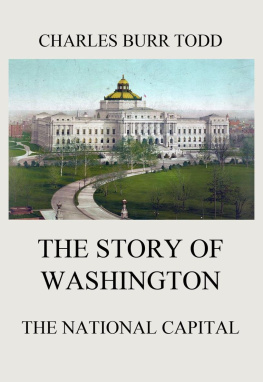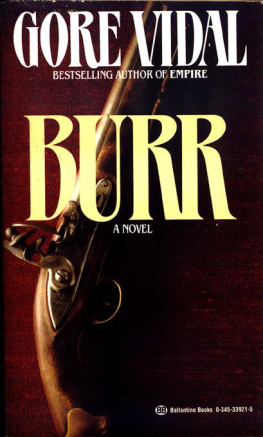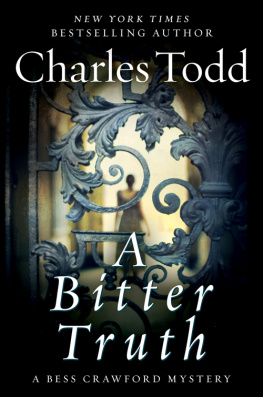CHAPTER I. THE OLD CITY DOCK
AN old-time friend of mine, a gentleman of leisure, whenever an attack of ennui threatens, flees to the city docks, where he finds in their bustle and infinite variety an unfailing specific. He stops to inspect whole fleets of canal boats snugly housed during winter from the terrors of the "raging canawl," is thrilled at sight of an ocean steamer just in from a perilous voyage, storm-battered, with torn sails, and decks and rigging sheathed with ice. The great railway docks hold him a long time. On the Southern steamship wharves he draws odorous breaths of resin and tar, trails his cane through little puddles of molasses, and gets his hair full of cotton lint, whereat the stevedores grin. The dock where the trim little fruit schooners from the West Indies unload is a favorite haunt and so are the piers along South Street, below Roosevelt, where the few battered veterans of the California and Canton trade still discharge their cargoes. When his circuit is completed he has studied every nationality, learned the cut of every civilized jib, heard the music of every tongue, and inspected the products of the known earth.
The region between the present Coenties Slip and Whitehall Street my friend finds most prolific of fancies. It is the site of the old city dock, the first built on Manhattan. This dock was the comer-stone of the commerce of our metropolis, the progenitor of our thirty miles or more of wharves. That famous monopoly, the West India Company, built it, and its quaint, round-bottomed, high-pooped Dutch ships were the first vessels here. They gathered the grain, pelts, lumber, potash, and medicinal herbs that then formed New Netherland's exports, or landed the hardware, groceries, household goods, brick, "cow calves" and "ewe milk sheep," and other peculiar Dutch imports. As late as 1702 this dock formed almost the sole wharfage of the city, and seventy-four vessels, pinks, galleys, snows, a few brigs and ships, were moored to it during the year, two thirds of them from the West Indies and Southern provinces. The town then contained 5250 inhabitants, living in 750 dwellings, so that the wharf was ample for its needs. As much of the interest and romance of the old dock gathers about this period from 1690 to 1700, I may indicate its primitiveness by the fact that the city streets were first lighted in 1697, by hanging a lantern on a pole before every seventh house "in the dark time of the moon," and that the city police force consisted of four honest citizens whose office was to walk the streets at night sounding a bell and proclaiming the hour and state of the weather.
Along the rude dock at that time we should have seen, here a galley from Fayal, there a " pink" from Barbados, in its neighbor a "snow" from Boston or the Virginias, with possibly a full-rigged bark or ship from London unloading cargo, for England was as determined then as later that her American colonies should receive their European products through her own bottoms and warehouses. It is likely, too, that a trim, buoyant vessel, painted black, with long tapering masts and spars, would be lying at the wharf a slave trader lately in from the coast of Guinea, and about to sail for a new cargo. As soon as the stout burghers of Manhattan acquired a little wealth in stock and lands they felt the need of servants, and dispatched ships to the coast of Africa after them. Strange adventures and many dangers attended these early traders; if they escaped the pirates which then swarmed in all frequented seas, they ran into some little port along the Angola coast, bargained with the petty king of the place for a contingent, and so creeping along the shore made up their cargo from a score of villages, provided, however, that some piratical craft did not follow them into harbor and capture craft, cargo and all. For these were the days of such freebooting in the colonies as seems incredible to modem ears.
In our character of dreamer we shall see a dim, shadowy vessel far out in the offing that does not come boldly up to the wharf like an honest craft, but tacks and fills as if waiting an assurance that the coast is clear before venturing in. While we are speculating about her a long boat appears coming from her direction, in whose bow stands a stout, swarthy, bearded man, his sinister face tanned by Indian suns, a fine, beautifully wrought gold chain from Arabian workshops about his neck, rings set with gems on his fingers, and under his coat a netted belt through whose meshes we catch the gleam of gold. Once ashore he makes his way to the Governor's mansion, whence he presently returns smiling and rubbing his hands gleefully, and then hurries away to the ship. Next morning we gather with the crowd to see the latter berthed, and when this is done and the hatches removed, bale after bale of costly merchandise is hauled up and carried away. One might fancy himself for the nonce transported to the Orient. Tea and cassia, rich silks of China, woven fabrics of Cashmere, Indian sandal wood, perfumes, and gems, spices and gums of Ceylon. African gold and ivory, with half the products of European workshops, the vessel pours out, until half-a-million dollars in value has passed from her hold. There is no doubt as to the character of the craft; she belonged to that powerful guild of pirates which at this period, under the corrupt Governor Fletcher, had become one of the wealthiest interests of the city.
These colonial pirates at this distance of time seem the ideal freebooters. As a rule they were the most enterprising shipmasters of their day, who were drawn from the merchant service into privateering during the French and Spanish wars, and on the return of peace, impatient of restraint, became privateers on general principles and turned their guns on vessels of every flag. The whole waste of waters was their cruising ground, but their special field was the Indian Ocean. With characteristic ingenuity they reduced the business to a system. The home merchants, who in many cases had fitted them out and had a share in the profits, established lines of swift vessels to Madagascar, the rendezvous of the pirates, which carried out such supplies as they might need and brought back the booty to be disposed of as lawful merchandise, the pirates themselves returning home only at intervals. What seductive pictures must have been painted for the adventurous youth of Gotham in 1690-6 when the pirate captains were beating up the town for recruits! Fighting and bloodshed were not mentioned; the prizes were unarmed and would yield to a show of strength. And in sober truth these calculations were correct. East India piracy was not a bloody trade; captured crews and passengers were in most cases well-treated and put ashore at the nearest point. At the trial of Captain Kidd his prosecutors could not fix a single murder upon him, except that of a mutinous member of his crew. With such inducements scores of vessels fitted out from the colonial ports, chiefly from New York and Rhode Island. Had they been content with plundering the Dutch and native traders, they might have continued to flourish for years; but when, grown bolder, they began taking the rich bottoms of the East India Company, that powerful corporation began taking steps to suppress them.









